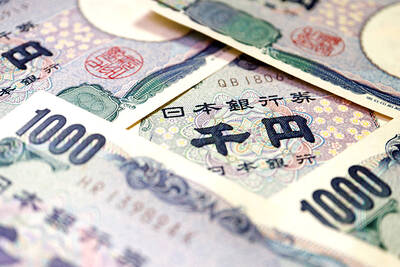Severe acute respiratory syndrome (SARS)-related advertising is on the rise as companies look to capitalize on consumer concern over the disease, industry sources said yesterday.
"With SARS rampant around the nation, more and more products are linked directly or indirectly to fighting SARS," an account executive of Dentsu (Tai-wan) Inc (
The total volume of ads, however, did not significantly increase because of SARS related advertisements, said the executive, who asked to remain anonymous.
"They were afraid of appearing to be profiteering from SARS, but I believe SARS has created considerable profits for some of these companies," she said.
Newspapers and TV ads are plugging products to combat the disease, including vitamins, air purifiers, health food and hand-washing products.
Lu Chia-yu (
The advertising department of the Chinese-language Liberty Times, however, said SARS-related product ads have recently increased by 20 percent. The Taipei Times is part of the Liberty Times Group.
ING Antai Life Insurance Co (安泰人壽) has run ads recently that encourage a traditional Chinese greeting of clasping one hand over the other to avoid shaking other people's hands. The company says it ran the ad to promote awareness of public hygiene and that it cost 15 to 20 percent of its annual advertising budget.
"Our business didn't grow due to the fear of SARS," said Ingrid Chen (
"Some of our customers have extended their insurance coverage for potential SARS contamination, but the travel insurance business is dropping due to fewer and fewer people going abroad," she said.
Meanwhile, Consumers' Foundation (

GROWING OWINGS: While Luxembourg and China swapped the top three spots, the US continued to be the largest exposure for Taiwan for the 41st consecutive quarter The US remained the largest debtor nation to Taiwan’s banking sector for the 41st consecutive quarter at the end of September, after local banks’ exposure to the US market rose more than 2 percent from three months earlier, the central bank said. Exposure to the US increased to US$198.896 billion, up US$4.026 billion, or 2.07 percent, from US$194.87 billion in the previous quarter, data released by the central bank showed on Friday. Of the increase, about US$1.4 billion came from banks’ investments in securitized products and interbank loans in the US, while another US$2.6 billion stemmed from trust assets, including mutual funds,

AI TALENT: No financial details were released about the deal, in which top Groq executives, including its CEO, would join Nvidia to help advance the technology Nvidia Corp has agreed to a licensing deal with artificial intelligence (AI) start-up Groq, furthering its investments in companies connected to the AI boom and gaining the right to add a new type of technology to its products. The world’s largest publicly traded company has paid for the right to use Groq’s technology and is to integrate its chip design into future products. Some of the start-up’s executives are leaving to join Nvidia to help with that effort, the companies said. Groq would continue as an independent company with a new chief executive, it said on Wednesday in a post on its Web

RESPONSE: The Japanese Ministry of Finance might have to intervene in the currency markets should the yen keep weakening toward the 160 level against the US dollar Japan’s chief currency official yesterday sent a warning on recent foreign exchange moves, after the yen weakened against the US dollar following Friday last week’s Bank of Japan (BOJ) decision. “We’re seeing one-directional, sudden moves especially after last week’s monetary policy meeting, so I’m deeply concerned,” Japanese Vice Finance Minister for International Affairs Atsushi Mimura told reporters. “We’d like to take appropriate responses against excessive moves.” The central bank on Friday raised its benchmark interest rate to the highest in 30 years, but Bank of Japan Governor Kazuo Ueda chose to keep his options open rather than bolster the yen,

Even as the US is embarked on a bitter rivalry with China over the deployment of artificial intelligence (AI), Chinese technology is quietly making inroads into the US market. Despite considerable geopolitical tensions, Chinese open-source AI models are winning over a growing number of programmers and companies in the US. These are different from the closed generative AI models that have become household names — ChatGPT-maker OpenAI or Google’s Gemini — whose inner workings are fiercely protected. In contrast, “open” models offered by many Chinese rivals, from Alibaba (阿里巴巴) to DeepSeek (深度求索), allow programmers to customize parts of the software to suit their